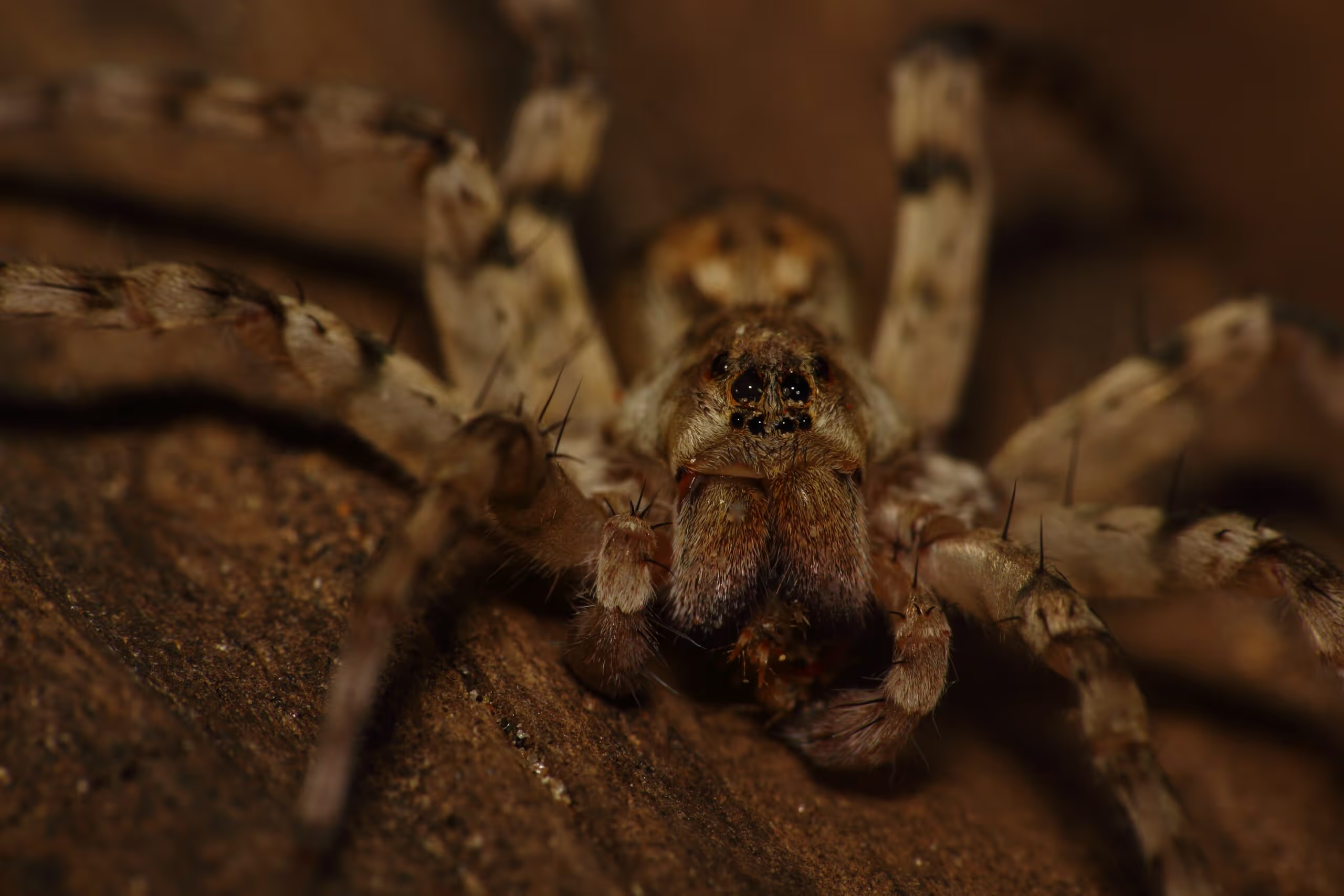Wolf Spiders - Fast Sprinters and Deadly Hunters


It’s October, which means the spooky season is upon us. To help you get into the spooky spirit, let’s take a closer look at the deadly hunter known as the wolf spider.
Wolf spiders are members of the Lycosidae family. “Lycos” is derived from the Ancient Greek word for wolf. Excluding their legs, wolf spiders can range in size from 10 to 33 millimeters. Unlike any other spider, the wolf spider’s egg sac is attached to spinnerets at the end of its abdomen, which allows it to carry its eggs with her. After hatching, the wolf spider continues to carry its young for several weeks until they can fend for themselves.
Most wolf spiders do not spin webs–the “sprinters of the spider world” don’t need to set traps. Wolf spiders are agile and fast, and they chase down their prey. In addition to being able to chase after prey, wolf spiders have excellent eyesight and are strong hunters. While some wolf spiders will run down and pounce on prey, others will hide in burrows waiting for an opportunity to attack–acting similar to the wolves they were named after.
A wolf spider’s talent for killing continues after the chase. Once a wolf spider catches its prey, it will smash it into an easily digestible ball or inject it with venom to liquify its internal organs.
Most wolf spiders spend the majority of their time on the ground, hiding under rocks or logs, or burrowing into the ground. They can live almost anywhere, including here. In Washington State, wolf spiders can be confused with agelenidae, like the common grass spider. One way to tell a wolf spider from a grass spider is from the eyes. Both spiders have eight eyes, but the similarities stop there. The grass spider has eight eyes of similar size on the front of its head; the wolf spider has two large eyes on the front of its head, four smaller eyes below the large eyes, and two eyes on the top of its head.
The wolf spider’s secondary eyes–its largest eyes–contain a reflective tissue that appears to glow when in contact with light and helps the wolf spider when hunting at night. The way that a wolf spider’s eyes are arranged also contributes to its excellent vision and hunting abilities. The two eyes in the middle of the bottom row “keep track of polarized sunlight” which helps the spider maintain its orientation. At the same time, the six other eyes are tracking how far the prey travels, helping the wolf spider gauge when and where to pounce.
Sources
“Reference - Wolf Spiders,” National Geographic: https://www.nationalgeographic.com/animals/invertebrates/facts/wolf-spider. Accessed 9 October 2022.
Virata, Alex. “Friendly Neighborhood Spider,” 2019 Green Plate Special: https://greenplatespecial.org/blog/183466. Accessed 9 October 2022.
“Wolf Spider,” Wikipedia: https://en.wikipedia.org/wiki/Wolf_spider. Accessed 9 October 2022.
Woo, Marcus. “Are We There Yet? Wolf Spiders Use Their Eyes as Odometers” 2017, Inside Science: https://www.insidescience.org/news/brief-are-we-there-yet-wolf-spiders-use-their-eyes-odometers. Accessed 9 October 2022.
Photo by Saketh Upadhya on Unsplash
© Holly Duffy, October 2022
Touch whale bones, examine shipwreck artifacts and connect with the coast's living history.

Support our mission, get involved in educational programs, or contribute through donations and volunteering.